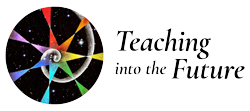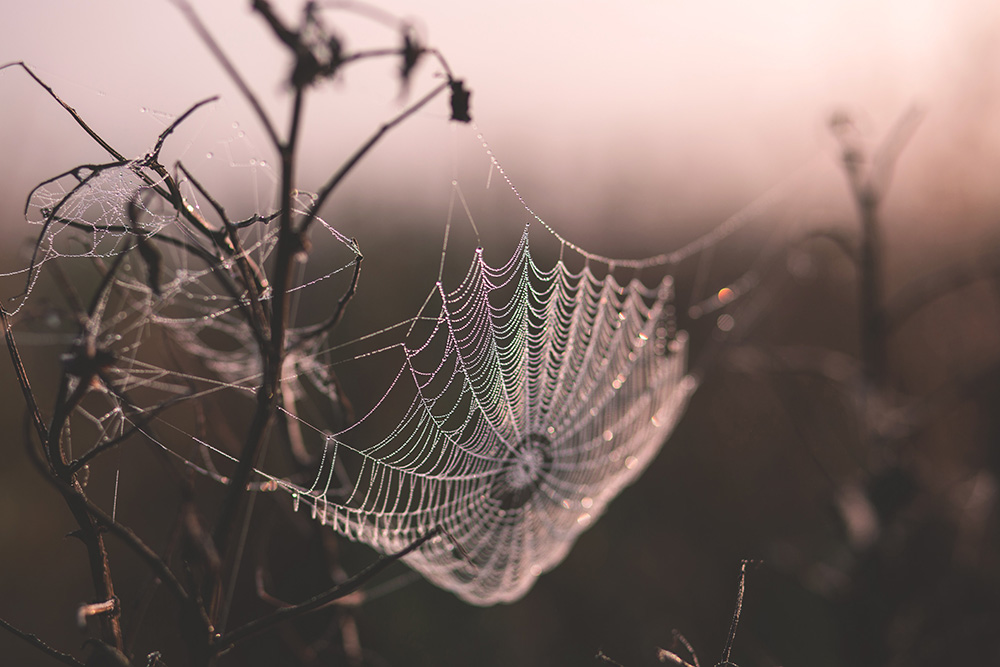How do we hold the wealth of curriculum? We need to relate on a personal and a communal level to emerge the invisible; to emerge what we have already taught which has gone into the background in order to activate future lessons by deepening the present moment.
Teachers ultimately work with the concepts of time and space. With time, we are looking at the past, present and future of all the subjects, the lessons that we have taught, the days, the months and the years, the personal biographies of our students, my personal biography as a teacher and how that relates to what I am teaching now. We are always in the present moment dipping into the past, dipping into the experiences and the decisions and the visions and the outcomes that we make, whether it be yesterday, two months ago, two years ago, 20 years ago. If we are the product of all that, the children are certainly also a product of all that they have been taught. How do we work with that in a present way? How do we create a living experience of what we have done in the past in our current subject lessons? How do we bring it into context?
We can then build anticipation for the future in our present lessons by planting seeds, but looking at working with the future in the now.
What are the goals of your lesson, your plan, your unit block and where do you want your students to be by the end of the month? By the end of the season? By the end of the year? Where do you want them to be in a year from now? That is dipping our hands into the future, bringing it back and carrying the current lesson plan into seeding those future lessons.
I began to directly, consciously implement the future seed into my daily practice in teaching and working with space and how a symbolic red thread weaves through space. I looked at interconnectivity, the school that I was working with, that I work with, the preschool, the kindergarten through throughout the elementary school grades. I had to know where they came from and how I could connect with what the other aspects and divisions of the school were working with and how I could work with the parents, the board and the administration. Not to mention how I could work with other teachers in creating an interconnected thread that was common between us.
When we are working with the red thread in space, our common threads are united curriculum planning and events between school spheres, between different divisions and how just even the smallest invitation to do so, can create stronger connections and warmer, empathetic reactions to one another, which can last for days and months, weeks and years.
I do not know why I call it the red thread, it just came to me, but when I looked up the red thread, I realized that Asia and many other cultures in the world use the red thread as a sign of loyalty and fidelity. It is often used as an engagement bracelet. I thought about that because for me, engagement is at the core of my work. What is it to engage, to marry, to bond, to make a commitment to how we weave that red thread? That bracelet of fidelity and loyalty to our students, to one another in our colleagues, to the parents who support us teaching their children, to the board members who often put in volunteer time to keep our schools running. How do we thank them? How do we let them see that we see that thread? How do we weave that tapestry that began to be more and more of a question? As I began to look at the past and renewing past learning, of course, I came to where have we come from? What is the history of the school? What are the biographies of the faculty? What are the roots of the curriculum?
If you are a homeschooling parent, you can adapt everything. to the history of the homeschooling movement, to the biographies of the people that you are working with in teaching and leading you to teach your children and the roots of the curriculum that lies behind everything. What have the children learned that can be present now? How do we work with imaginative recall in our lessons, or if you are an administrator, agenda follow up? I think we often, as teachers, keep forging ahead without looking back into the past and pulling back and recalling what we have taught the children and what was the most important thing to let that be, an act of inquiry that does not have our answers, but the responses of the students that we teach. How do we take that forward into enlivening our present day learning styles, where are we now? What if you were to work with the image of a tree, if the past is to be the roots, what are the stems and stalks of the curriculum? What is the emergent inquiry that we are working with? How are we activating inspired content and experience?
However, when I think about teaching in the present, it is usually what we are doing every day, the kids are noticing us. We are on a stage and it is very much like being in live theater. Most teachers would tell you that it also became something more. I realized that movement was key and how I work with where we are going?
How are you branching the curriculum and my subjects out like a tree? How are you bringing possibility in the unknown into the lessons? How are you expanding it and planting seeds for what was to come and what those seeds might be? In other words, how are you teaching into the future? We often think that we were waking students up, but how do we actually teach so that they can just get embedded as imaginations and as seeds and then go to sleep to be picked up again?
When I think about taking time in our hands as teachers, I think about the story of the three Norns, and they were the three giantesses at the bottom of the Yggdrasil tree in Norse mythology. It was interesting that the origin of the name Norn is derived from the word meaning to twine. Twining the thread of fate, they weave a web. They are responsible for shaping human destinies. I think that that could be a tagline for being a teacher: responsible for shaping human destinies. In a way where the Norns weave the past, the present and the future together as we make our way through our curriculum and our lesson plans. The web of the word which was spelled W-Y-R-D that the Norns’ represented the interconnectedness of the past, present and future, but it also represented the interconnectedness of what the Norse thought of as the microcosm in the macrocosm. The larger picture in the smaller picture. I began to think, with the larger picture, that I was shaping human destiny. Now the smaller picture is now I got grade four students in front of me. I got sixth grade six students in front of me. I’ve got kindergarten students in front of me. A grade 12 student in front of me. This being what I have, how was I going to be responsible for that in the future? It brought nothing short of, of course, student inquiry and student engagement. The Interdisciplinary Curriculum Seal, and how we work with interdisciplinary education in everything that we do, whether we realize it or not. If we do not, we should be.
One of the other aspects of the Norns and the task that they have, which was to help Yggdrassil, which is the tree of life, stay green and healthy, they carried water from the well and they had to collect earth or clay that lies around the well and pour it over the tree of life of Yggdrasil and if they failed to do it, the ash tree would have started to rot. I began to think, metaphorically, what is the nutrient that would be equal to the water of life for the tree of life? What is the tree of education? What is the compost that we need to work with in the tree of education? It is recognizing that education is inquiry and emerging interest, I think, is how we really look at how we create an environment from old life and bring it to life anew each day.
We have a tendency to drill academic content such as the multiplication tables into the students. Recollection of the times tables or to drill grammar, nine parts of speech, let’s memorize, reiterate and regurgitate. I think that that would be the comparison to organic and non-organic food. It is there, it works, and you can eat it. You can teach it, but what is the living life force? What are the enzymes behind our curriculum? What is this idea of new life born of old? I think, well, it comes through that moment, that in-between place, that what you have learned is taking shape and is not quite born yet, is still living as a sprout, as a possibility within the human being and it is still sleeping. How do we carefully tend the roots of those seeds that we ourselves have planted in the children so that they do not become dry and dead roots that might still hold the tree up, but not be able to give it nourishment in life, for if it is not giving nourishment to the students and life to everything that we teach, what is our task? I find it interesting that this trio of Norns worked with what once was, what is coming into being and what shall be in Norse mythology can have significance for teaching and for learning and what it means to learn from the tree of life itself.

